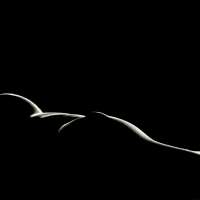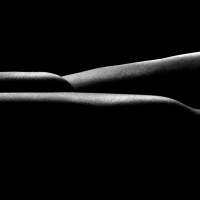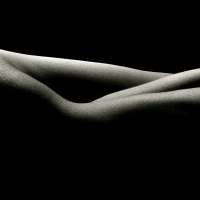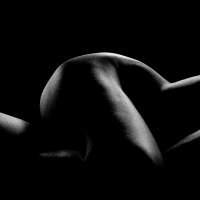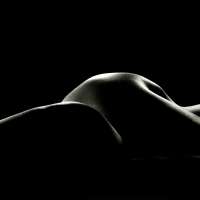

Simon Chaput
Berkeley Shore Hotel, 2014From the series ‘Miami Beach Art Deco’
Edition of 15
Simon Chaput
Simon Chaput Biography Born in France in 1952, Simon Chaput has had a passion for photography since his father gave him a Kodak Brownie camera for his 8th birthday. As a youth, he devoured photography publications and taught himself how to shoot and set up his own darkroom so that he could print his own pictures. His intent was to study photography at secondary school, but due to setbacks, including required French military service, his desire to be a photographer was thwarted until later life. It wasn’t until after Simon Chaput left France, closing down his art gallery that he had owned for seven years and moved to New York in 1983, that he would be inspired again to start shooting and focus on his photography. During the first month of his arrival in 1983, Simon Chaput met Jeanne Claude and Christo who became friends, mentors, family, inspirations, and collaborators. Simon Chaput started working on their projects in different capacities as needed, ranging from the director of their offices in Paris for “Pont Neuf Wrapped”, scouting and coordinating for the “Umbrellas” in Japan and California, and the “Wrapped Reichstag”. Between working on the Christo’s projects, he started shooting for himself. In 1987, Simon Chaput traveled to Tibet, which had just opened up from Chinese stronghold to foreigners and he began a long period of documentary work that would lead to other photography trips around the world. The Australian Outback and the American Southwest would be his next two locations where he would continue his own personal documentary landscape work, focusing on the panoramic form. Later in 1995, Simon Chaput set out on a trip through India to follow in the footsteps of the Buddha. This is when he started his series the “Jantar Mantar”, which is a study on the Stone Observatories in Jaipur and Delhi, built in the 18th Century. Documentary work that Simon Chaput has been commissioned to shoot includes the “Rally of the Pharaohs” in Egypt in 1990, from which photos of his were featured in the Smithsonian Air and Space Museum Magazine (April 1991). In 1991, Simon Chaput was invited on a United Nations sponsored trip to document the ecological situation in Peru in preparation for the environmental focused, Rio Conference. In 1991, Simon Chaput started the first of several working relationships with documentary filmmakers, shooting on the set of “Liberators” with Nina Rosenblum. They would continue to work together on two other films “Women Photographers” and “In search of Pitt Street”, all focusing on social conscientious subject matter. In 1993, Simon Chaput found himself working with filmmaker, Gaetano Maida on two films about the Buddhist teacher Thich Nhat Hanh, which led to Simon Chaput becoming the teacher’s primary photographer. Simon’s photos have been published in over 20 books of Thich Nhat Hanh, including “The Joyful Path” (Parallax Press 1994). In 1996, Simon Chaput started his first long-term personal fine art series, “New York”, shooting the architecture in New York. This work is really what began his distinct style of abstracting the images by playing with negative space and paying special attention to the composition in order to achieve geometrical compositions that intentionally throw off the viewer and forces them to look at these otherwise recognizable buildings in a new way. This series can also be considered as documentary work, due to the city changing over the years. His striking images of the World Trade Center have become iconic and revered, as much as the buildings themselves before they were destroyed. In 2006, The Brooklyn Museum acquired one of his photos from this series for the group show “Looking Back from Ground Zero”. In 1999, Simon Chaput received a grant from the Henry Luce Foundation to specifically document the primitive Kogi Indians located in the Sierra Nevada de Santa Marta Mountains, Columbia. This project was in correlation with the documentary film about the Kogi, “From the Heart of the World”. The grant allowed Simon Chaput to spend three months in the jungle shooting the isolated, ancient tribe to help them convey their environmental message to world. From this trip, Simon Chaput produced a stunning portfolio of black and white photos exposing the tribe’s vulnerable dependency to their natural environment. In 2000, Simon Chaput returned to his own fine art work and set off for Death Valley in California with a nude model. He was inspired by the way the female body echoed the dunes, but came to realize he could shoot the nude in the studio as the dunes themselves. Thus, his black and white “Nudes” series began and he was given his first show at Howard Greenberg Gallery in 2003. He joined The Photographers Gallery (London) in 2003, and was given a show with the “Nudes” in 2004. In 2005, he had a show with the “Nudes” in the Hyatt Gallery in Tokyo, Japan. He joined the Fifty One Fine Art Photo Gallery (Antwerp) in 2005, and had his first show with the “Nude Dune” in 2007. In 2007, Simon Chaput began his next long-term series, “Waterfalls”. The original intent was to photograph the extreme waves on the rugged western coast of Ireland, but due to a wave crashing his camera the first day of shooting, he had to reexamine his intent and possibilities. This led him to discover a waterfall in the area and inspiration struck. Simon Chaput continued traveling over the next few years to Ireland, before he discovered the many waterfalls surrounding his home base of New York. Given the precise weather conditions of little light and specific amount of water needed in the falls, it became easier to continue the series and travel close to home. In 2009, Simon Chaput joined the Jackson Fine Art Gallery (Atlanta, GA) and had a show with the “Nudes” and “Waterfalls” in 2010. In 2011, the “Waterfalls” were featured in the show “Water” at the Fifty One Fine Art Gallery (Antwerp). In 2010, Simon Chaput was commissioned to shoot for the Paris Opera. Simon Chaput’s photography for them has since then been featured in their programs, website, and billboards around Paris promoting the Opera’s productions. His work is in many private and public collections worldwide, including the Goldman Sachs Collection (NY), Brooklyn Museum (NY), John Kaldor (Australia), the Baur au Lac Hotel (Switzerland), Le Royal Monceau Hotel (Paris). Simon Chaput joined the Foreign Press Association in 1992, and continues as a member today. His work has been published in over 80 international publications including Conde Nast Traveler, Harper Collins Books, the Washington Post, New York Magazine, Le Figaro, and L’Express. He has been featured in articles on his work in numerous publications, including Beaux Arts Magazine (France), Kyoto Journal (Japan), Gatsby Magazine (Germany), and Soon Magazine (France). Simon Chaput’s body of work over the years varies from social and subject documentary, color panoramic, and fine art black and white. Through his work with nature and individuals, he hopes to highlight social and environmental issues that affect the world. Balancing that with his artful black and white series, Simon Chaput enjoys sharing a different way of looking at beauty found around us, whether it is through architecture or the female body or waterfalls. Since the beginning of his photography career, Simon Chaput continues to shoot with film and develops at home in his dark room and prints on silver gelatin fiber base paper.

